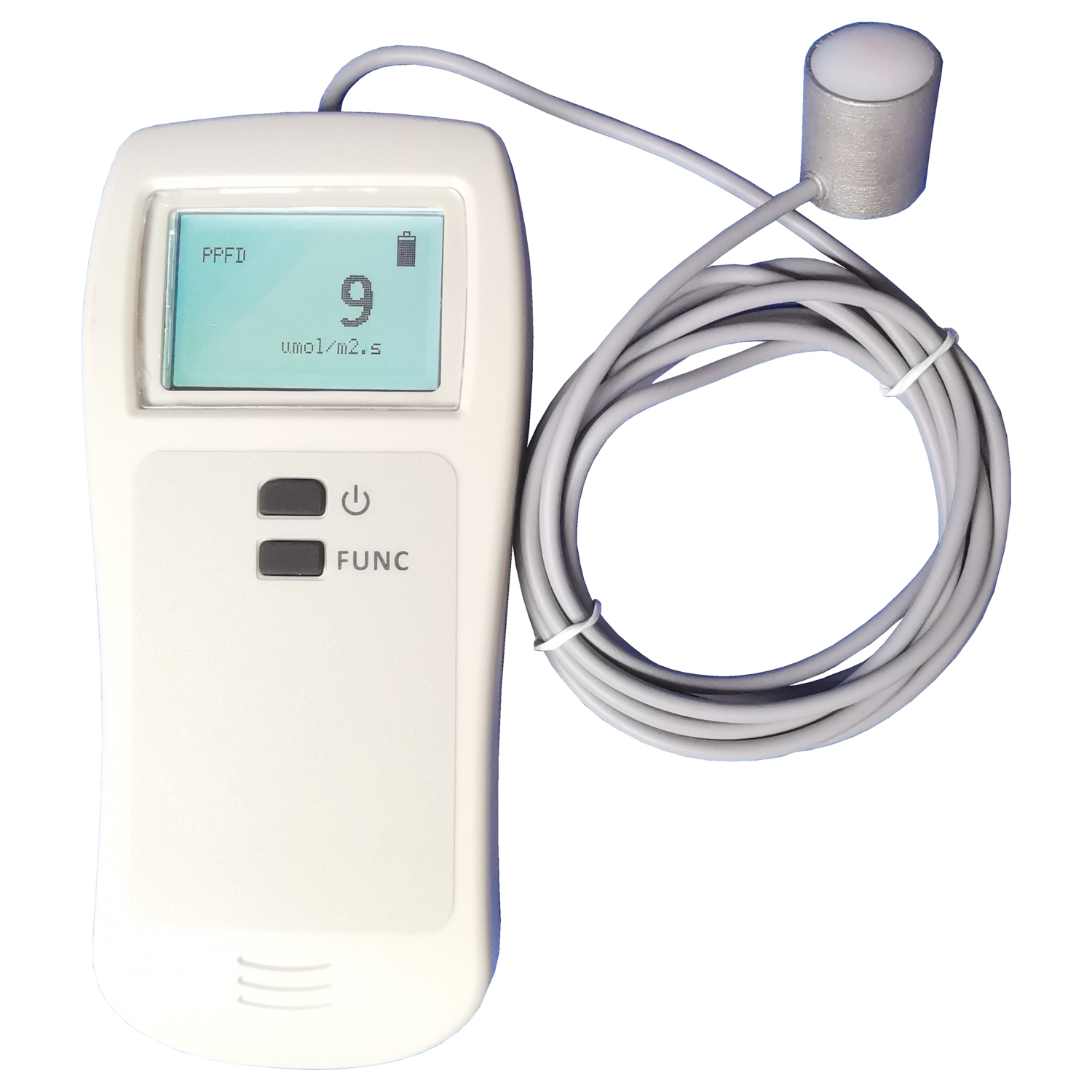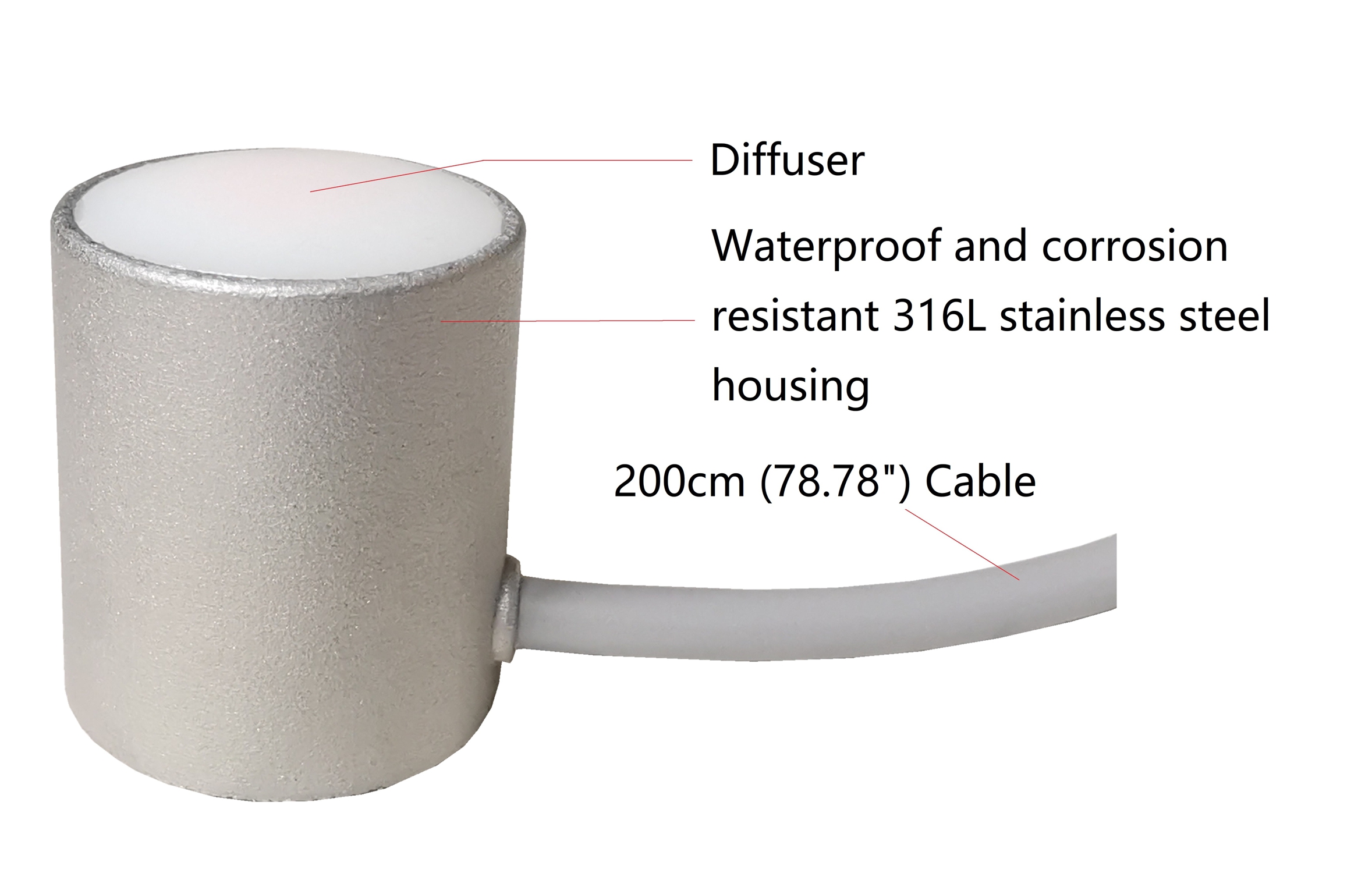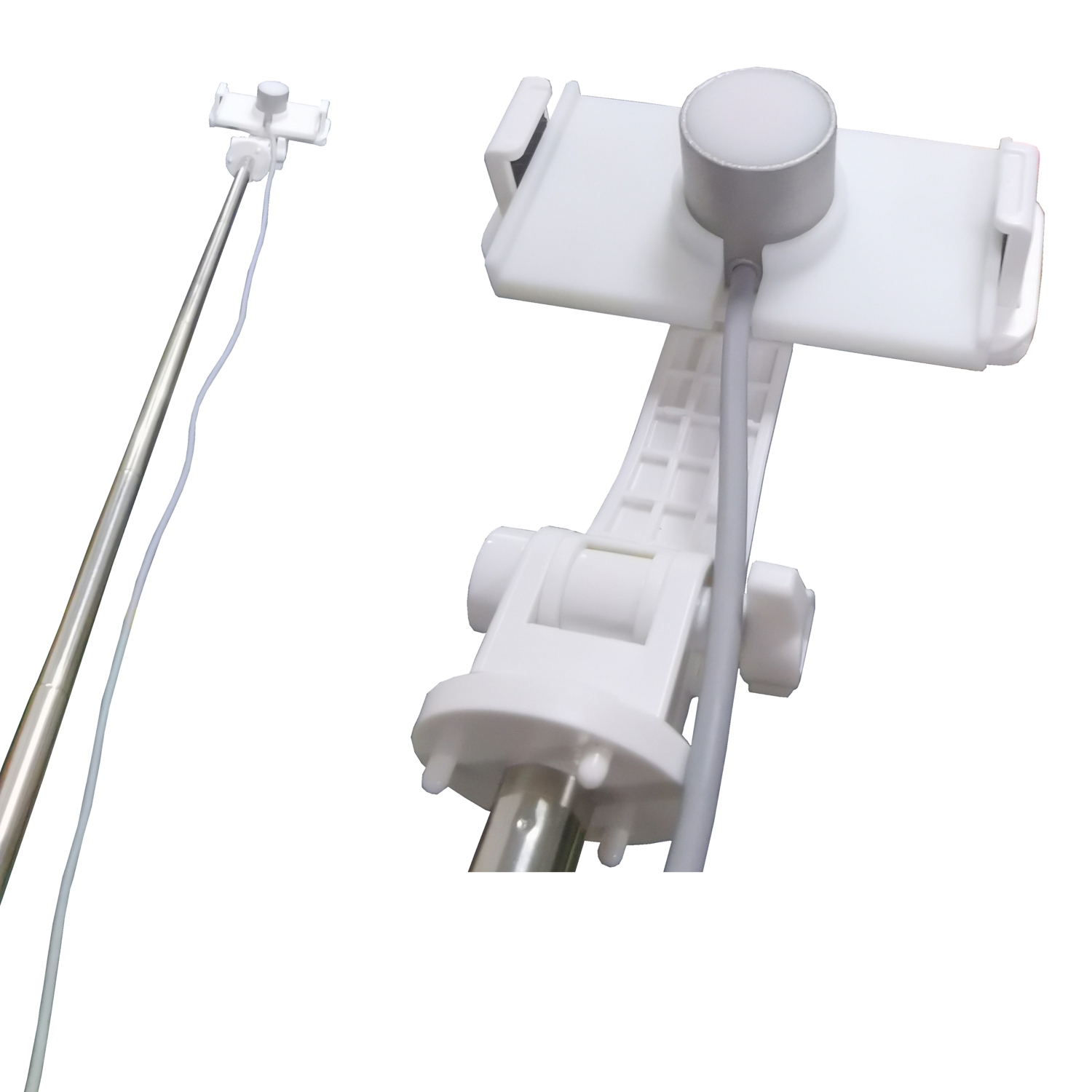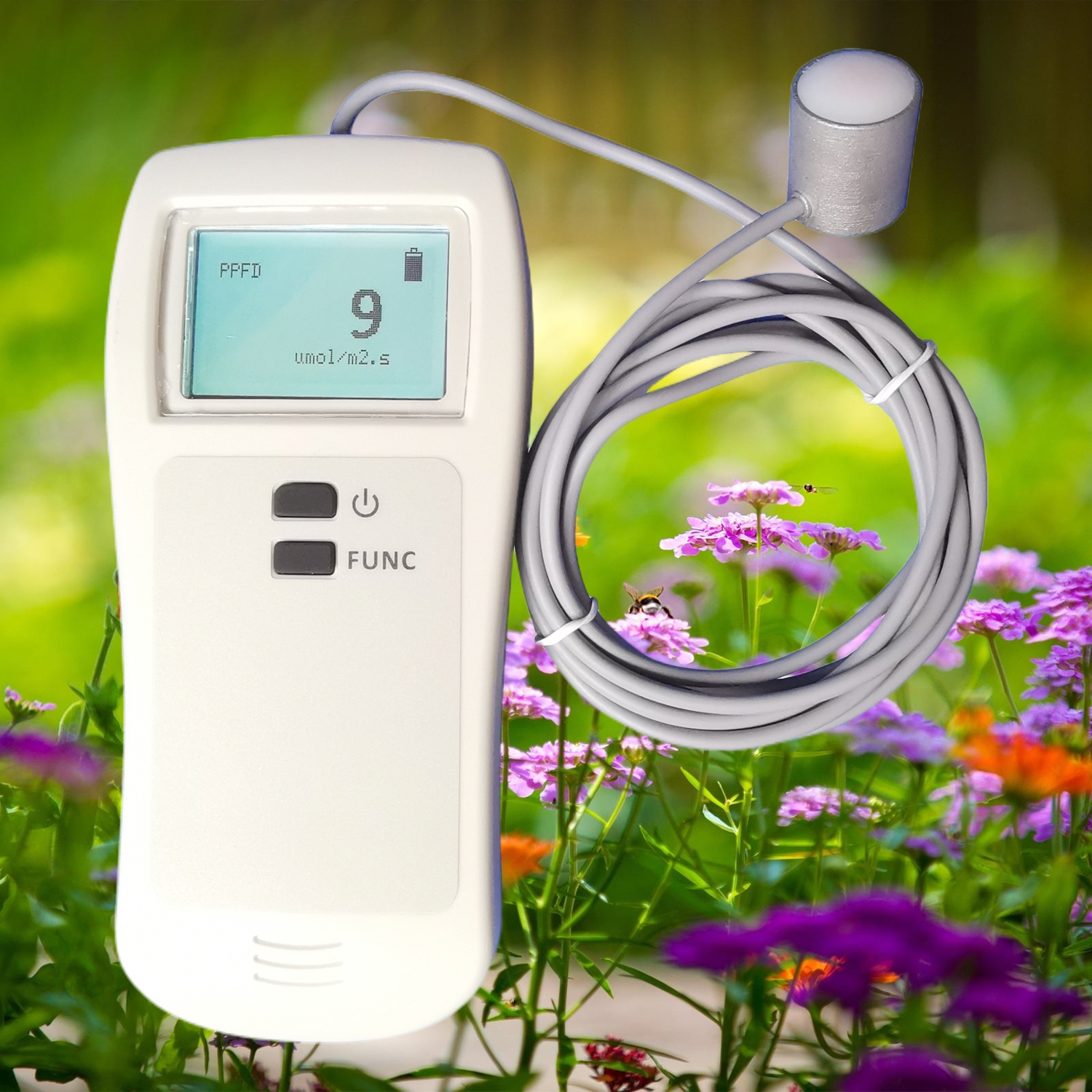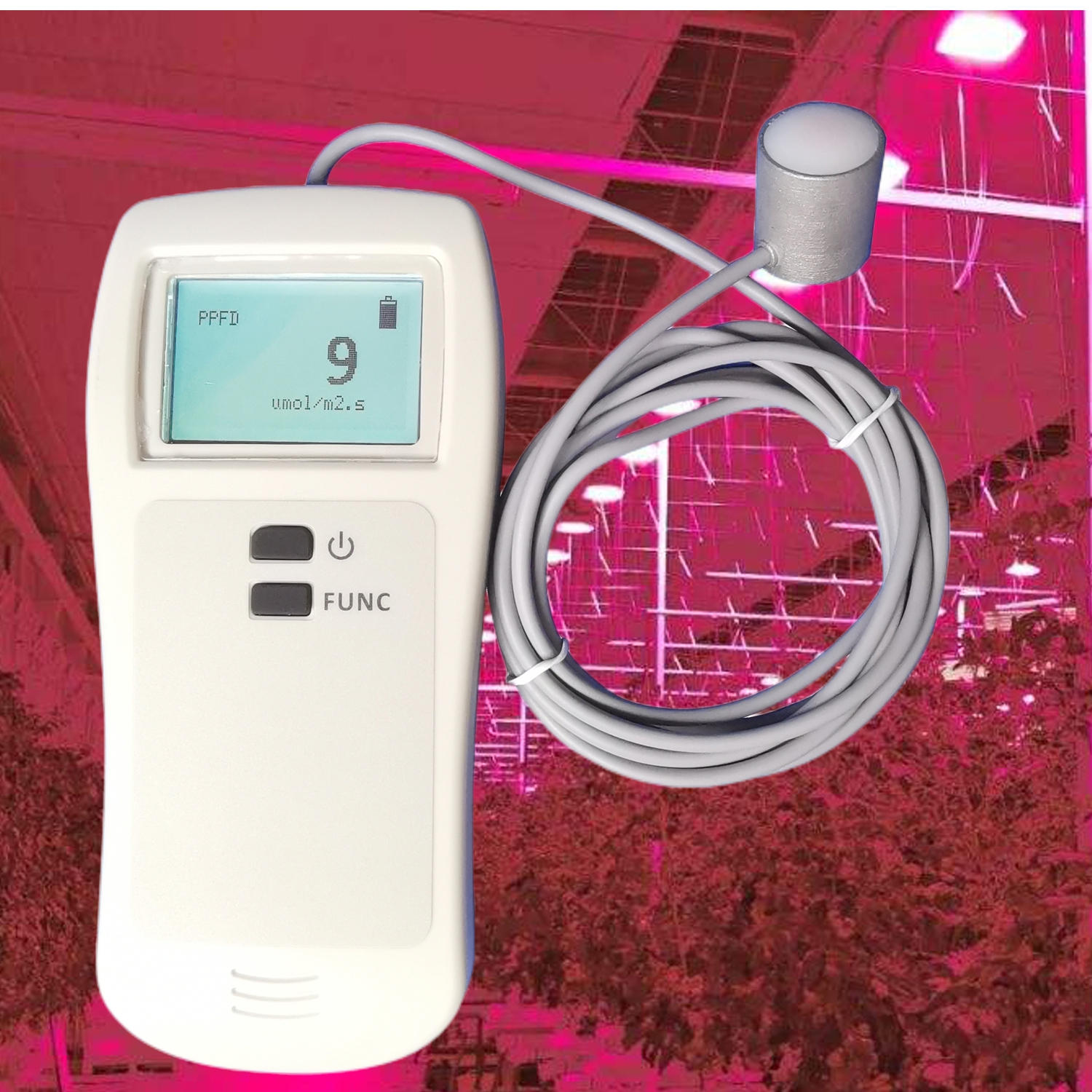XAR-P10 Quantum PAR Meter
XAR-P10 Quantum PAR Light Meter
The light that drives photosynthesis in plants is Photosynthetically Active Radiation or PAR light and is typically defined as total radiation across a range of 400 to 700 nm. PAR is universally quantified as Photosynthetic Photon Flux Density (PPFD), the sum of photons in units of micromoles per square meter per second. The XAR-P10 Quantum PAR Light Meter is designed to measure PAR flux.
XAR-P10 is ideal for gardeners, agronomy application measuring PPFD. Typical applications include measurement of incident PPFD on plant canopies in outdoor environments or in greenhouses and growth chambers, and reflected or under-canopy (transmitted) PPFD measurement in the same environments.
Features
Provides accurate PAR light readings from full sun to full shade indoors or outdoors and artificial light sources (LED, High Pressure Sodium, Metal Halide, Fluorescent, and Halogen)
PAR light measuring range from 0 to 4000 umol*m-2*s-1
Support three modes of operation:
--Instant spot-check measurement mode for PAR light readings PPFD;
--Scan mode for quickly averaging PAR over an area;
--DLI mode shows Daily Light Integral
Accurate and instant response
Easy to read large backlight display
Only two buttons and easy to operate
Four AA Alkaline Batteries
Applications
Measurement of incident PPFD on plant canopies in outdoor environments or in greenhouses and growth chambers, and reflected or under-canopy (transmitted) PPFD measurement in the same environments
For gardeners, agronomy application measuring PPFD
Device
1. PAR light sensor
2. LCD display
3. Power button
4. Function button
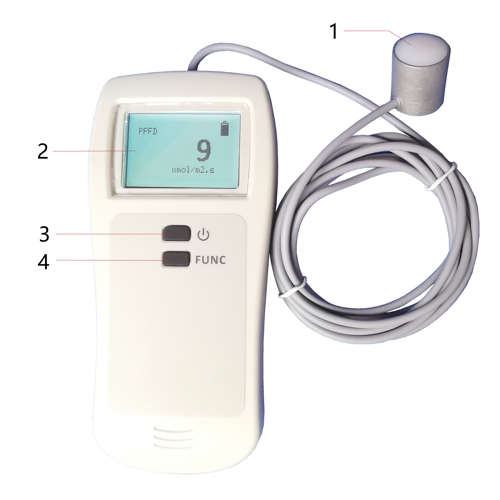
Sensor
The XAR-P10 Quantum PAR Light Meter consists of a handheld meter and a dedicated quantum sensor that is connected by cable to aluminum housing. Sensor consists of an acrylic diffuser (filter), and photodiode.
Daily Light Integral (DLI)
DLI is displayed in moles per square meter per day. The typical range for DLI is 3 to 26 mol*m-2*d-1. This is useful for understanding the average amount of light your crop sees in a day. One mole is equal to one million micromoles.
Each type of plant has a different DLI range for optimal growth. DLI is directly correlated with plant quality, and a minimum amount of light is required for marketable plants. Measuring DLI can guide in decisions regarding shade cloths and supplemental light.
XAR-P10 Quantum PAR Light Meter is designed for spot-check measurements, and calculation of DLI through the built-in logging feature.
The XAR-P10 Quantum PAR Light Meter takes a light reading every 3 minutes to use in calculating a 24-hour Daily Light Integral (DLI). Every 15 minutes the previous 24 hours of stored readings are used to recalculate the DLI. Readings are automatically taken whether the meter is on or off, as long as there is a battery in the meter, including after a power cycle (off and on).
Cosine Response (Sun Angle Effect)
Ideally a horizontally projected light source should show no available light for your crop regardless of its intensity. Conversely, a directly overhead light source will have 100% of its light available for your crop. Some of the radiation coming into a sensor at low angles is reflected, causing low readings. This is called cosine effect. The convex optical disc found on the sensor of this meter is designed to capture radiation at low angles and minimize cosine response errors. This meter is designed to accurately display light intensity readings ±80° from vertical.
Specifications
PAR Specification
Measuring Range | 1 to 4000 umol*m-2*s-1 |
Spectral Range | 400-700 nm |
Sensitivity | 1 umol*m-2*s-1 |
Response Time | <1s (99%) |
Temperature Correlation | Max. 0.05%/°C |
Cosine Correction Incident angle | Up to 80° incident angle |
General
Operating | -10°C to 50°C (14°F to 122°F), 0~90% RH non-condensing |
Storage | -10°C to 60°C (14°F to 140°F), 0~80% RH non-condensing |
Power Supply | Four AA Alkaline Batteries |
Meter Dimensions | 75x165x25 mm (2.95x6.49x0.98”) |
Sensor Dimensions | 50 mm (1.97”) diameter; 30 mm (1.18”) height |
Weight | 233 grams (8.22 oz.) without batteries |
RECOMMENDED DLI
Generalized plant responses to different light levels
Relative light level | DLI (mol*m-2*d-1) | PPFD at Noon (umol.m-2.s-1) | Generalized plant growth response |
Very Low | 2 to 5 | 100 to 200 | Poor quality |
Low | 5 to 10 | 200 to 400 | Minimum acceptable |
Medium | 10 to 20 | 400 to 800 | Good quality |
High | 20 to 30 | 800 to 1200 | Excellent quality |
Very High | 30 to 60 | 1200 to 2000 | Excellent quality |
Recommended DLI for crops
Crop | Recommended DLI (mol*m-2*d-1) | Light hours per day |
Seedlings (first 2 weeks) | 6-8 | 16 hours - less direct light (8 inches from canopy) |
Seedlings (weeks 3-4) | 10-12 | 16 hours - less direct light (6 inches from canopy) |
Greens - lettuce, kale, chard, etc | 14-16 | 14-16 hours per day |
Tomatoes, melons, vining crops | 25-35 | 18-20 hours per day |
